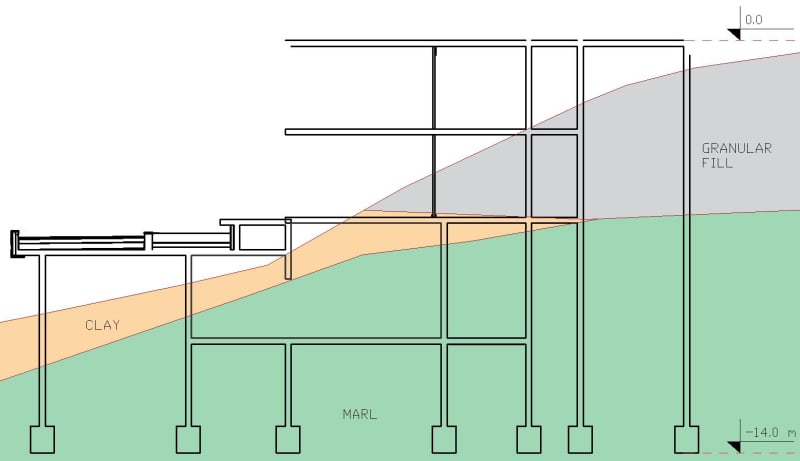Hello! I'm currently working on this project where a large building is being constructed on a slope. The static calculations have all been done and our job is to design the construction pit. We noticed on the drawings when looking at a cross section down the slope that all the "parts" of the building are presumably founded on strip footings, but all on the same absolute depth even though it is a cascade building with bottom floors on different depths, meaning that some walls on the upper part of the hill would extend over 10 m into the ground just to be founded on this strip footing held on the same depth as all others. Obviously we found that very strange and are almost certain this doesn't have to be done that way, it just looks wrong and there are much better solutions for the problem if there really was a reason for them to be on the same depth. We do have in our national standards recommendations that all footing should be on the same depth, of if not then the maximum slope between neighboring footings to be 1:1 with maximum step of 50 cm. There are reasons I can think of to justify these recommendations, but on the other hand, if we need a wall long 10 m going into the ground just to end on a strip footing, for which we need enormous quantities of excavations to construct, then isn't it better to change the foundation system to piles in those cases? But surely not all cascade building constructed across the slope are founded on piles in the top area, right? Obviously there is the problem of slope stability, but as I said in my opinion there are better solutions for that. I'd like to hear your expert opinions and experiences on this subject.
Tek-Tips is the largest IT community on the Internet today!
Members share and learn making Tek-Tips Forums the best source of peer-reviewed technical information on the Internet!
-
Congratulations cowski on being selected by the Eng-Tips community for having the most helpful posts in the forums last week. Way to Go!
Foundations of a large building on a slope
- Thread starter Sjotroll
- Start date



